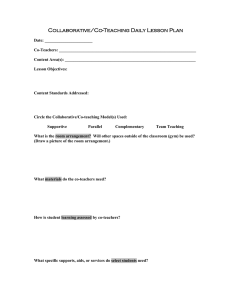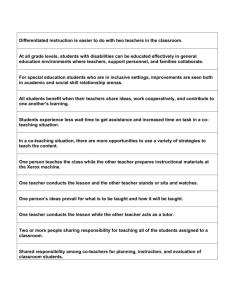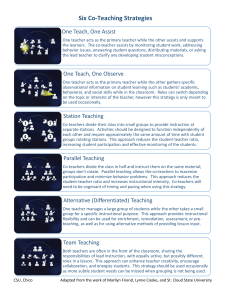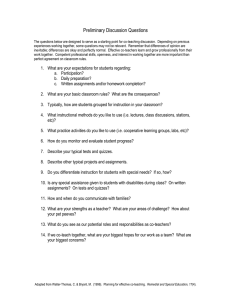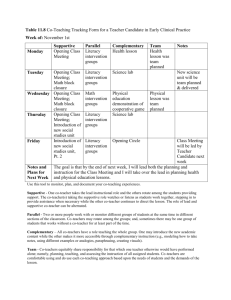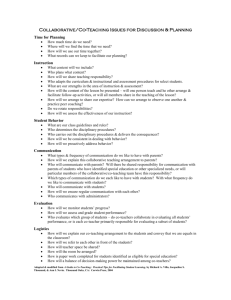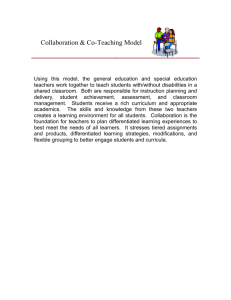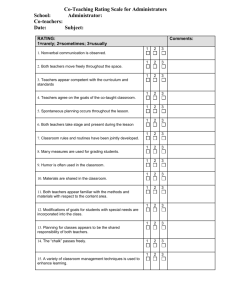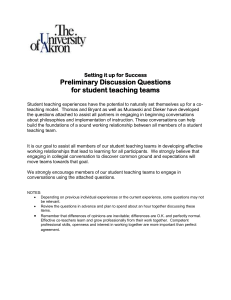Strategies for Expanding Time for Planning
advertisement
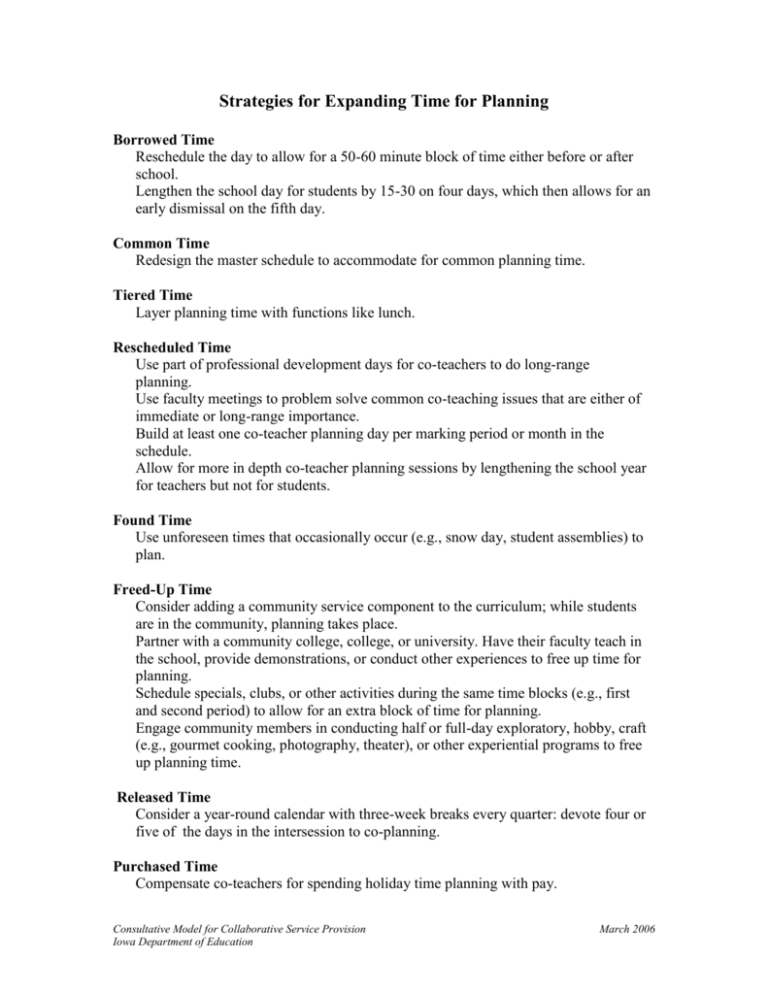
Strategies for Expanding Time for Planning Borrowed Time Reschedule the day to allow for a 50-60 minute block of time either before or after school. Lengthen the school day for students by 15-30 on four days, which then allows for an early dismissal on the fifth day. Common Time Redesign the master schedule to accommodate for common planning time. Tiered Time Layer planning time with functions like lunch. Rescheduled Time Use part of professional development days for co-teachers to do long-range planning. Use faculty meetings to problem solve common co-teaching issues that are either of immediate or long-range importance. Build at least one co-teacher planning day per marking period or month in the schedule. Allow for more in depth co-teacher planning sessions by lengthening the school year for teachers but not for students. Found Time Use unforeseen times that occasionally occur (e.g., snow day, student assemblies) to plan. Freed-Up Time Consider adding a community service component to the curriculum; while students are in the community, planning takes place. Partner with a community college, college, or university. Have their faculty teach in the school, provide demonstrations, or conduct other experiences to free up time for planning. Schedule specials, clubs, or other activities during the same time blocks (e.g., first and second period) to allow for an extra block of time for planning. Engage community members in conducting half or full-day exploratory, hobby, craft (e.g., gourmet cooking, photography, theater), or other experiential programs to free up planning time. Released Time Consider a year-round calendar with three-week breaks every quarter: devote four or five of the days in the intersession to co-planning. Purchased Time Compensate co-teachers for spending holiday time planning with pay. Consultative Model for Collaborative Service Provision Iowa Department of Education March 2006 Hire substitutes to free up co-teachers to plan during the day rather than before or after school. New Time In what ways might the school administration provide co-teachers with incentives that would motivate the use of their own time to plan? Adapted from A Guide to Co-Teaching by Villa, Thousand and Nevin Consultative Model for Collaborative Service Provision Iowa Department of Education March 2006
